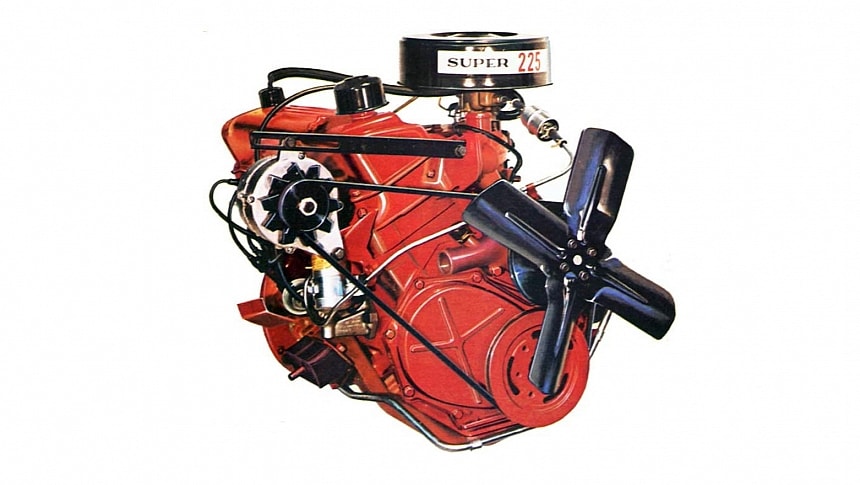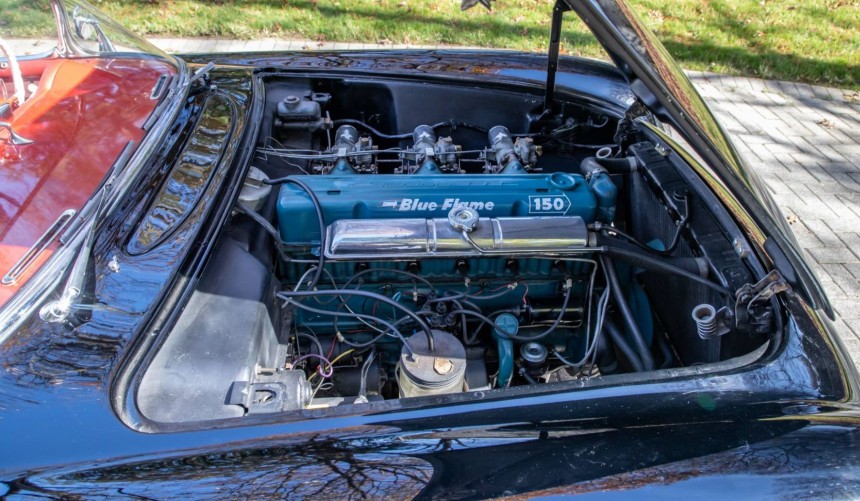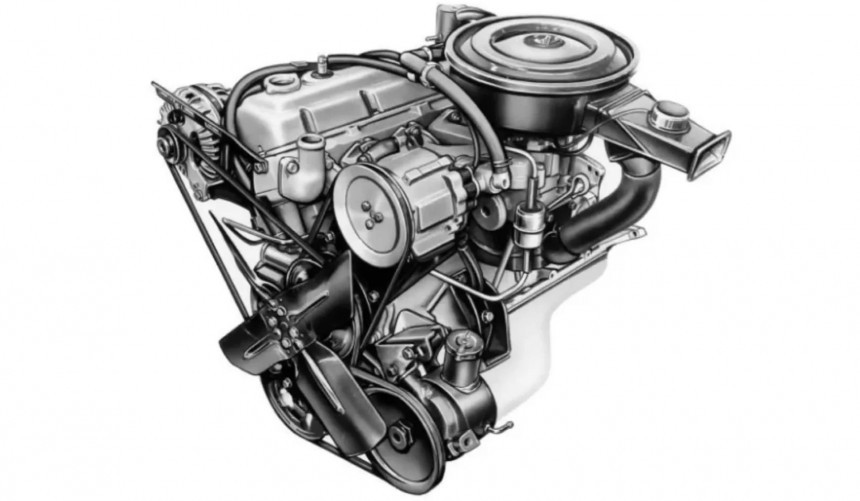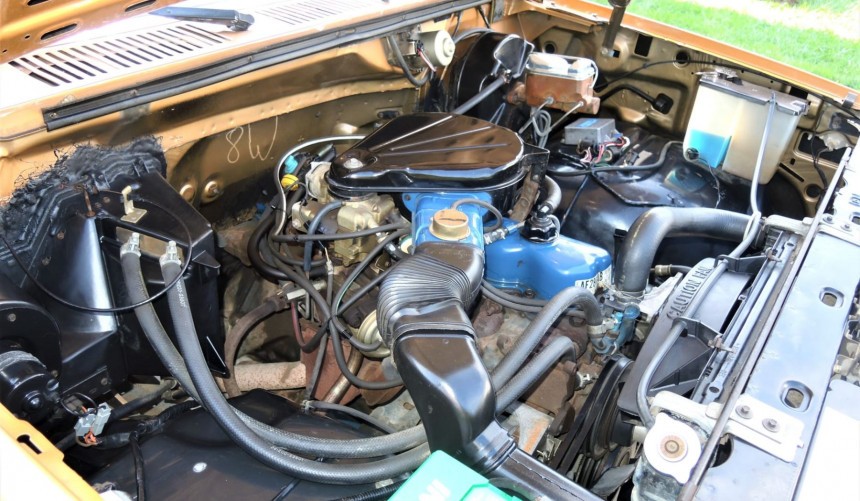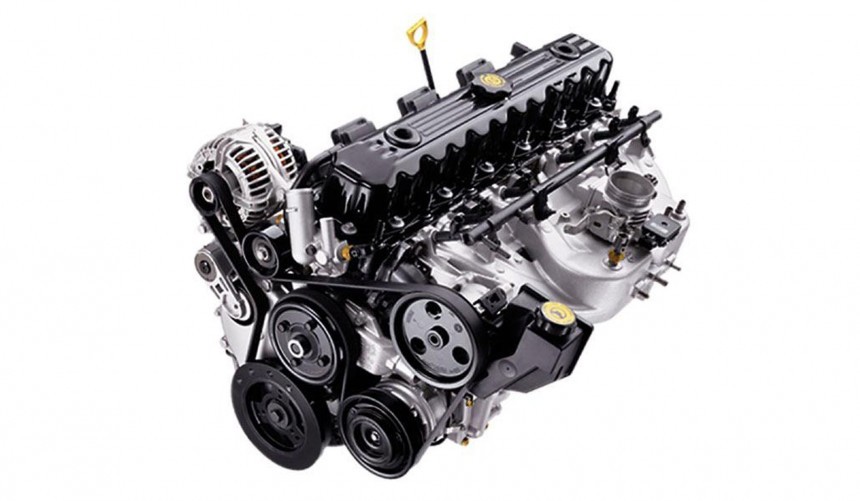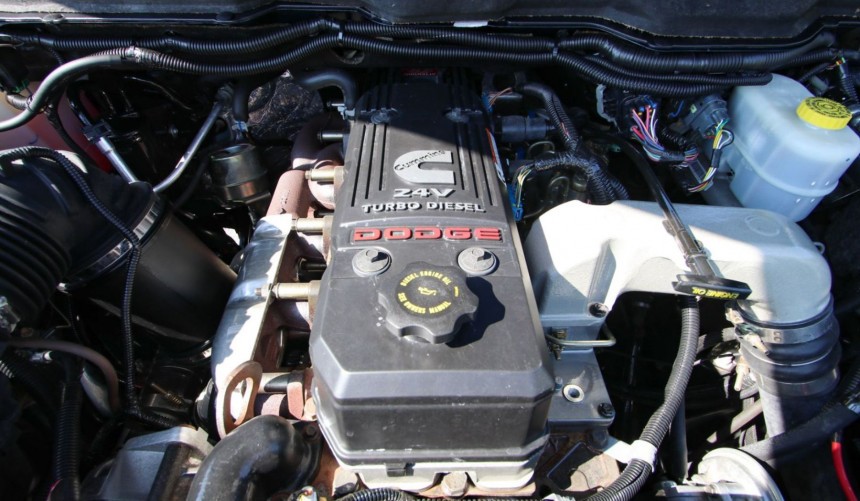When it comes to US-made engines, the V8 reigns supreme, but American manufacturers have also built several iconic straight-sixes throughout the years.
The straight-six engine is nearly 121 years old, and while electric power has become the wave of the future, the automobile industry is far from done with this legendary ICE.
The first production straight-six was developed by the Dutch company Spyker and made its debut in the 1903 race car dubbed, rather uncreatively, 60 HP.
Though it took a few years for other manufacturers to follow suit, by the mid-1910s, almost every company that built automotive engines was developing one.
The secret to its popularity is the perfect primary and secondary engine balance obtained with an appropriate firing order. That means minimal vibration compared to other designs and, consequently, a smooth-running engine.
In the US, Ford unleashed the first mass-produced automotive straight-six as early as 1906 for its Model K. However, the next Ford inline-six would come nearly four decades later.
In the meantime, Oldsmobile, Pontiac, Buick, Oakland, Hudson, or Chrysler developed a series of great six-pots.
Engineers' focus would shift to the V8, which became Detroit's main weapon from the 1940s onwards, but the development of the straight-six was never abandoned. In most cases, it was relegated to entry-level or standard engine duty, in large part because of its ease of maintenance and reliability.
In 1929, a quarter of a century before it unleashed the small-block V8, Chevrolet replaced its 171-ci (2.8-liter) inline-four with a brand-new inline-six.
Powering the entire line of Chevy cars and trucks, the 46-hp engine featured a forged steel crank with three mains and cast-iron pistons. It was far from an innovative design, which people to mokingly nickname it "Stovebolt Six" and Cast-Iron Wonder."
Nevertheless, it provided adequate power, impressive reliability, and, best of all, it didn't significantly increase the price of Chevy's models, so it was continually improved in the following years.
In 1937, it was time for the second generation, which, among other upgrades, received a redesigned crankcase with four main bearings.
The second-gen Stovebolt was produced in three different versions with 216 ci (3.5 liters), 235 ci (3.8 liters), and 261 ci (4.3 liters) displacements.
While the 216 wasn't a huge leap forward, and the 261 was almost exclusively used in large trucks, the 235 (aka Blue Flame), which became available in passenger cars starting with the 1950 model year, was the Stovebolt family's most impressive member.
It made up to 155 hp in Corvette-exclusive versions with an 8.0:1 compression ratio, and besides its power potential, it became known for its supreme reliability.
The Stovebolt was discontinued in the US in 1963 when it was replaced by the Turbo-Thrift. Nevertheless, it remained in production in Brazil until 1979.
Chrysler has been mass-producing straight-sixes for more than a century, but unquestionably, its most famous remains the Slant-6.
It was developed in the late 1950s by a team of dedicated engineers led by Willem Weertman and remained in production until the year 2000.
Internally dubbed G-engine but nicknamed Slant-6, the unit was a completely new, clean-sheet design that aimed to replace the venerable Flathead.
Initially a full cast-iron unit (an aluminum block and several alu heads were subsequently built), the Slant-6 was designed with durability in mind, which is why it had a deep-skirted block with the crank positioned well above the oil pan rails.
Moreover, with a 30-degree inclination of the block that lowered the height of the complete engine package, stylists were able to design lower hood lines.
The motor debuted in 1960 models and was available in two displacement sizes. The first was a 170-ci (2.8-liter) designed for compact cars, while the second, a 225-ci (3.7-liter) version, initially saw use in full-size passenger cars.
In 1970, the original 170 was replaced by an improved 198-ci (3.2-liter) variant that provided more power for the revised models, where it was offered as the standard engine option.
In terms of output, the original 225 was the most potent in stock form, delivering 145 hp. However, the bombproof architecture allowed a multitude of upgrades that included forced induction, so it was not uncommon to see tuned Slant-Sixes that made well over 350 hp.
The engine powered a Chrysler Corporation model in 1983, but it continued to be produced for trucks until 1987.
The Slant-6 story didn't end there, as US production soldiered on for five more years for marine, agricultural, and industrial use. After that, the engine continued to live in Mexico, where it was manufactured, until 2000.
As I mentioned earlier, Ford released America's first mass-produced inline-six in 1906, but after production ended in 1908, the company took a 33-year break from the design.
A new Ford flathead straight-six came in 1941 and survived less than a decade. The second generation, introduced in 1952, shared many components with the Y-block V8, but since it also shared the same common issues, it was discontinued in 1964.
In the meantime, the 1960 model year saw the introduction of the third generation dubbed Thriftpower Six, but it too was discontinued in 1964.
Finally, the fourth generation that debuted in 1960 was the near-perfect design that engineers were aiming for.
It was produced until 1996 in several displacement sizes, of which the most memorable was the 300-ci (4.9-liter) version.
With a cast-iron block and OHV cylinder head, forged conrods, triple-ring aluminum pistons, and quad-bearing camshaft, the single-carb 300 was a virtually indestructible workhorse that provided adequate power and plenty of low-end torque.
It was mostly used in F-Series trucks and E-Series Vans, but it was also the base engine for three generations of the Bronco (1980 to 1992).
Though the Aussie-built Barra is the greatest Ford straight-six, the 300 remains the corporation's best American-made six-banger thanks to its legendary durability and reliability.
The American Motors Corporation (AMC) was formed in 1954 when the Nash-Kelvinator Corporation merged with the Hudson Motor Car Company.
In the following years, many things originally developed by Nash were carried over, including a new six-cylinder.
Initially designed in the early 1950s, the engine was continually improved by AMC over the next decades, and in 1986, its most legendary version was introduced.
Officially called 4.0 after its metric displacement, the original 177-hp 242-ci motor was an improvement of the previous 258, so it was an evolution rather than a revolution.
It was developed in just 26 months using various off-the-shelf components as AMC was struggling to survive. Despite this, its beefy architecture made it one of the most durable and reliable straight-sixes ever conceived.
Designed for use in Jeep models, the 4.0 outlived AMC and continued to be improved and mass-produced under Chrysler ownership.
Rated at 190 hp from 1990 onwards, the legendary straight-six was continually produced until 2006. During its lifespan, it was known for its indestructible construction that typically allowed it to run well over the 300,000-mile mark(482,803 km) without requiring a rebuild.
Part of the Cummins B Series of diesel engines designed for multiple applications, the 5.9-liter straight-six was the first B engine to be used in a light-duty truck.
It made its debut in 1989 in the first-generation Dodge Ram as a potent, fuel-efficient alternative to a gas-guzzling V8.
An all-cast-iron unit, the 5.9-liter was buit to last. It featured a forged crankshaft with seven mains, a 12-valve cast-iron cylinder head, and a gear-driven cam drive. Moreover, at the time of its release, the turbocharged motor was the only light-duty pickup truck diesel to feature a fuel injection system.
In 1994, the excellent engine became even better with several improvements, including a new 24-valve head.
By 2002, it was extensively redesigned to be more powerful and fuel-efficient, receiving upgrades such as a common-rail fuel injection system.
The Cummins 5.9-liter was eventually discontinued after the 2007 model year. Throughout its lifespan, it made up to 325 hp and 600 lb-ft (813 Nm) of torque, but more importantly, it became a game-changer that pushed reliability, durability, and fuel efficiency to epic levels.
The first production straight-six was developed by the Dutch company Spyker and made its debut in the 1903 race car dubbed, rather uncreatively, 60 HP.
Though it took a few years for other manufacturers to follow suit, by the mid-1910s, almost every company that built automotive engines was developing one.
The secret to its popularity is the perfect primary and secondary engine balance obtained with an appropriate firing order. That means minimal vibration compared to other designs and, consequently, a smooth-running engine.
In the US, Ford unleashed the first mass-produced automotive straight-six as early as 1906 for its Model K. However, the next Ford inline-six would come nearly four decades later.
In the meantime, Oldsmobile, Pontiac, Buick, Oakland, Hudson, or Chrysler developed a series of great six-pots.
Engineers' focus would shift to the V8, which became Detroit's main weapon from the 1940s onwards, but the development of the straight-six was never abandoned. In most cases, it was relegated to entry-level or standard engine duty, in large part because of its ease of maintenance and reliability.
Chevrolet Stovebolt/Blue Flame
Powering the entire line of Chevy cars and trucks, the 46-hp engine featured a forged steel crank with three mains and cast-iron pistons. It was far from an innovative design, which people to mokingly nickname it "Stovebolt Six" and Cast-Iron Wonder."
Nevertheless, it provided adequate power, impressive reliability, and, best of all, it didn't significantly increase the price of Chevy's models, so it was continually improved in the following years.
In 1937, it was time for the second generation, which, among other upgrades, received a redesigned crankcase with four main bearings.
The second-gen Stovebolt was produced in three different versions with 216 ci (3.5 liters), 235 ci (3.8 liters), and 261 ci (4.3 liters) displacements.
While the 216 wasn't a huge leap forward, and the 261 was almost exclusively used in large trucks, the 235 (aka Blue Flame), which became available in passenger cars starting with the 1950 model year, was the Stovebolt family's most impressive member.
It made up to 155 hp in Corvette-exclusive versions with an 8.0:1 compression ratio, and besides its power potential, it became known for its supreme reliability.
The Stovebolt was discontinued in the US in 1963 when it was replaced by the Turbo-Thrift. Nevertheless, it remained in production in Brazil until 1979.
Chrysler Slant-6
It was developed in the late 1950s by a team of dedicated engineers led by Willem Weertman and remained in production until the year 2000.
Internally dubbed G-engine but nicknamed Slant-6, the unit was a completely new, clean-sheet design that aimed to replace the venerable Flathead.
Initially a full cast-iron unit (an aluminum block and several alu heads were subsequently built), the Slant-6 was designed with durability in mind, which is why it had a deep-skirted block with the crank positioned well above the oil pan rails.
Moreover, with a 30-degree inclination of the block that lowered the height of the complete engine package, stylists were able to design lower hood lines.
The motor debuted in 1960 models and was available in two displacement sizes. The first was a 170-ci (2.8-liter) designed for compact cars, while the second, a 225-ci (3.7-liter) version, initially saw use in full-size passenger cars.
In 1970, the original 170 was replaced by an improved 198-ci (3.2-liter) variant that provided more power for the revised models, where it was offered as the standard engine option.
In terms of output, the original 225 was the most potent in stock form, delivering 145 hp. However, the bombproof architecture allowed a multitude of upgrades that included forced induction, so it was not uncommon to see tuned Slant-Sixes that made well over 350 hp.
The engine powered a Chrysler Corporation model in 1983, but it continued to be produced for trucks until 1987.
The Slant-6 story didn't end there, as US production soldiered on for five more years for marine, agricultural, and industrial use. After that, the engine continued to live in Mexico, where it was manufactured, until 2000.
Ford 300
A new Ford flathead straight-six came in 1941 and survived less than a decade. The second generation, introduced in 1952, shared many components with the Y-block V8, but since it also shared the same common issues, it was discontinued in 1964.
In the meantime, the 1960 model year saw the introduction of the third generation dubbed Thriftpower Six, but it too was discontinued in 1964.
Finally, the fourth generation that debuted in 1960 was the near-perfect design that engineers were aiming for.
It was produced until 1996 in several displacement sizes, of which the most memorable was the 300-ci (4.9-liter) version.
With a cast-iron block and OHV cylinder head, forged conrods, triple-ring aluminum pistons, and quad-bearing camshaft, the single-carb 300 was a virtually indestructible workhorse that provided adequate power and plenty of low-end torque.
It was mostly used in F-Series trucks and E-Series Vans, but it was also the base engine for three generations of the Bronco (1980 to 1992).
Though the Aussie-built Barra is the greatest Ford straight-six, the 300 remains the corporation's best American-made six-banger thanks to its legendary durability and reliability.
AMC/Jeep 4.0
In the following years, many things originally developed by Nash were carried over, including a new six-cylinder.
Initially designed in the early 1950s, the engine was continually improved by AMC over the next decades, and in 1986, its most legendary version was introduced.
Officially called 4.0 after its metric displacement, the original 177-hp 242-ci motor was an improvement of the previous 258, so it was an evolution rather than a revolution.
It was developed in just 26 months using various off-the-shelf components as AMC was struggling to survive. Despite this, its beefy architecture made it one of the most durable and reliable straight-sixes ever conceived.
Designed for use in Jeep models, the 4.0 outlived AMC and continued to be improved and mass-produced under Chrysler ownership.
Rated at 190 hp from 1990 onwards, the legendary straight-six was continually produced until 2006. During its lifespan, it was known for its indestructible construction that typically allowed it to run well over the 300,000-mile mark(482,803 km) without requiring a rebuild.
Cummins 5.9-liter
It made its debut in 1989 in the first-generation Dodge Ram as a potent, fuel-efficient alternative to a gas-guzzling V8.
An all-cast-iron unit, the 5.9-liter was buit to last. It featured a forged crankshaft with seven mains, a 12-valve cast-iron cylinder head, and a gear-driven cam drive. Moreover, at the time of its release, the turbocharged motor was the only light-duty pickup truck diesel to feature a fuel injection system.
In 1994, the excellent engine became even better with several improvements, including a new 24-valve head.
By 2002, it was extensively redesigned to be more powerful and fuel-efficient, receiving upgrades such as a common-rail fuel injection system.
The Cummins 5.9-liter was eventually discontinued after the 2007 model year. Throughout its lifespan, it made up to 325 hp and 600 lb-ft (813 Nm) of torque, but more importantly, it became a game-changer that pushed reliability, durability, and fuel efficiency to epic levels.
